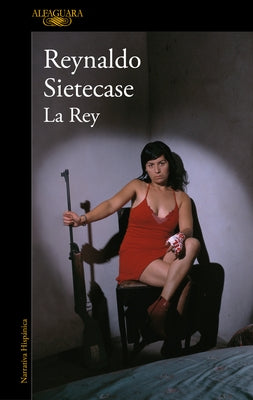Description
Blanca Rosa González was thirteen years old when she was raped the first time. Her father had sent her to live with Abuela Cándida and her partner, El Recio, in Ciudad del Este. From her teenage years she drew two things: systematic abuse and an obsidian stone her grandmother kept, a sort of magic charm that transported her to other worlds. Once installed in Villa 31, in the city of Buenos Aires, Blanca begins her transformation by selling drugs, until becoming the head of a Paraguayan drug band. Thus, The Queen is born. But when everything comes to the worst, she flees to Spain, where she falls prey to human trafficking and is forced to become a prostitute. There she will be implicated in a violent plot that ties her with the Natural Science Museum in Madrid, where a valuable obsidian mirror is kept, which will help her find the clues to her past. In this novel, Reynaldo Sietecase deepens his unique style, a mix of thriller, crime fiction, and current relevance, to offer a vibrant story that begins at Ciudad del Este, goes through Buenos Aires, and ends in Madrid, with a character so potent, readers won't forget.
Author: Reynaldo Sietecase
Publisher: Alfaguara
Published: 05/20/2025
Pages: 288
Binding Type: Paperback
Weight: 1.01lbs
Size: 9.37h x 5.91w x 0.87d
ISBN13: 9788410299535
ISBN10: 8410299534
Language: Spanish
BISAC Categories:
- Fiction | Thrillers | Crime
- Fiction | Women
- Fiction | World Literature | Argentina
About the Author
Reynaldo Sietecase nació en Rosario en 1961. Es poeta, narrador y periodista. Publicó las novelas Un crimen argentino (Alfaguara, 2002) y A cuántos hay que matar (Alfaguara, 2010), y el libro de relatos Pendejos (Alfaguara, 2007). También es autor de las crónicas de El viajero que huye (1994), Bares (1997) y No hay tiempo que perder (Aguilar, 2011); de la investigación periodística Kamikazes. Los mejores peores años de la Argentina (Aguilar, 2013), y de los libros de poesía Y las cárceles vuelan (1986), Cierta curiosidad por las tetas (1989), Instrucciones para la noche de bodas (1992), Fiesta rara (1996), Pintura negra (2000), Hay que besarse más (2005), Mapas para perderse (2010) y El amor muerde (2015). Por su labor en radio y televisión, obtuvo cinco veces el Premio Martín Fierro y fue distinguido en dos oportunidades con el Premio Tato.

